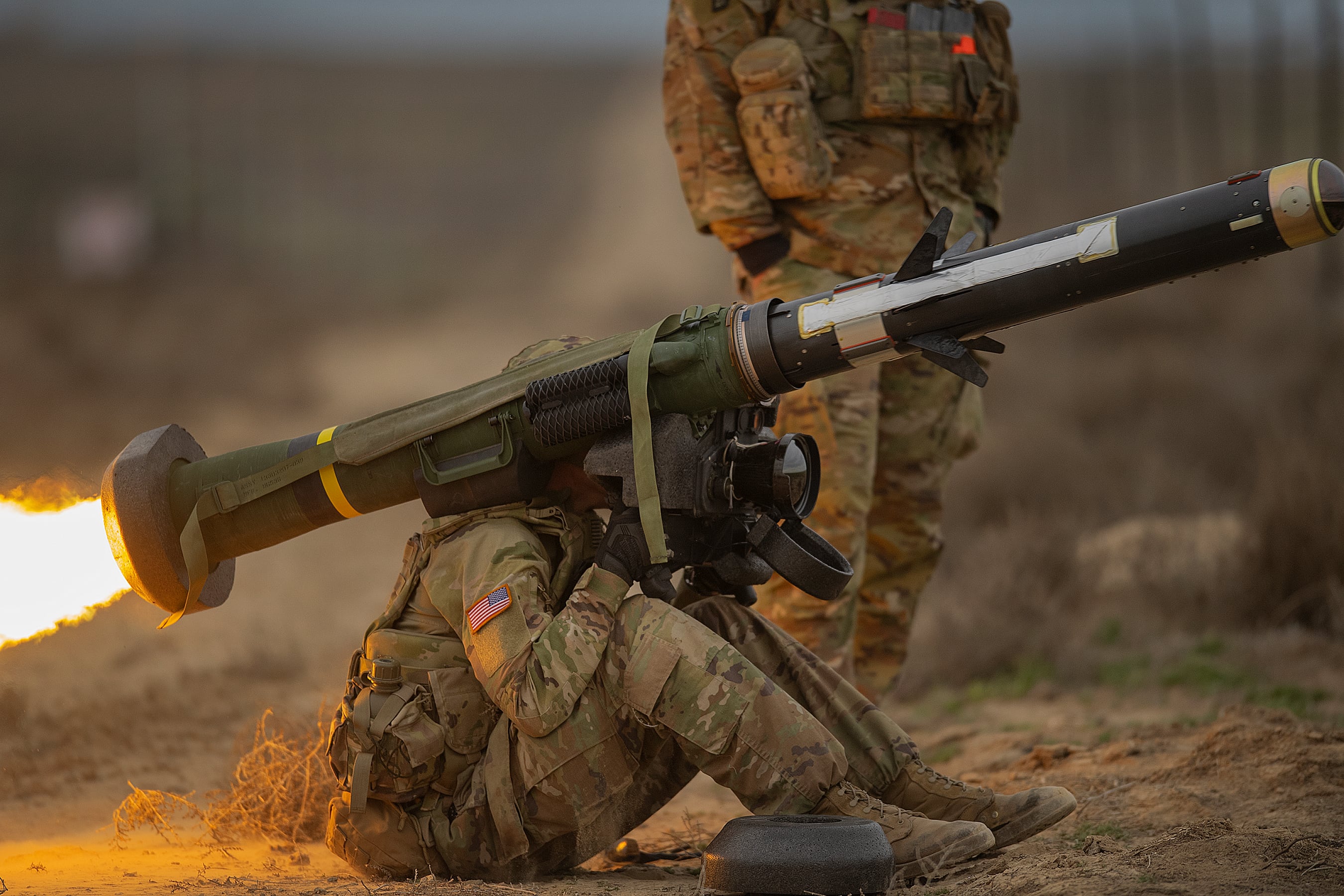A task force focused on soldier lethality is adding new initiatives to its portfolio, including a lighter Javelin missile, identifying how artificial intelligence can help squads, and looking into robot dogs as infantry battle buddies.
The Close Combat Lethality Task Force, established in 2018 under then-Secretary of Defense Jim Mattis, pushed for the Next Generation Squad Weapon, a 6.8mm intermediate-caliber replacement for the M4 for close combat troops, which was selected this year and begins fielding to troops in 2023.
It also lobbied for additional funding and prioritization for the Integrated Visual Augmentation System, a $22 billion program for a mixed-reality goggle aimed to put fighter pilot situational awareness tools in the view of squad-level soldiers.
On the human side, the task force supported efforts to revitalize infantry and close-combat training, increase unit cohesion by keeping infantry troops in the field longer, and reduce training tasks not related to combat.
But the task force has mostly remained in the shadows and sought a home since Mattis left office in 2019.
In a September briefing at the Maneuver Warfighter Conference at Fort Benning, Georgia, task force Director Army Col. Shannon Nielsen said the group pulls a variety of ideas and programs into view for senior leadership. “A lot of what we do is really champion all of the great ideas coming out of the field and out of the services,” Nielsen told the audience.
Under former Defense Secretary Mark Esper, the task force in 2020 moved from a Defense Department-level reporting authority to the Department of the Army. While that keeps it close to most ground combat troops and saw it physically move from Washington, D.C., to Fort Benning, the entity may not be far from the flagpole for long. That is because the most recent budget proposal directed the Pentagon to move the task force back to a position in which it directly reports to the defense secretary.
“We’ve gotten smaller and leaner since we arrived in Fort Benning,” Ed Agee, a principal program analyst with the task force, told C4ISRNET, an Army Times sister publication.
To be sure, the Army has cross-functional teams dedicated to several focus areas, including soldier lethality. But Nielsen said work to fill lethality gaps and maintain close-combat advantages is an enduring mission. In that context, the task force maintains five major areas of focus: manpower policy; training; human performance; warfighter equipment and weapons systems; and science and technology as well as research and development efforts.
Those are fairly broad, but Nielsen shared a handful of current initiatives and some long-term efforts the task force is shepherding:
- 3D audio for dismounted operators, which provides realistic audio, especially in simulated training scenarios.
- A Javelin lightweight command launch unit. The current Javelin system weighs about 52 pounds. The current controller weighs 15 pounds and can strike targets at 1.5 miles. The lightweight version is one-third smaller, half the weight and increases the battery life by 50%, according to Javelin Joint Venture, and can engage targets at up to 2.5 miles.
- The V60 quadrupedal unmanned ground vehicle, an all-terrain, legged robot made by Ghost Robotics that would give users off-road options with these uncrewed platforms.
- Detailed information for two other current initiatives — a hyper-enabled stealth operator kit and an infantry battalion mortar system — was unavailable.
- In the longer term, the task force is working on a home-station counter-drone training policy after learning that much of the current rules governing such training constrain troops trying to practice those skills.
- The task force is also looking for ground organic precision strike systems, ways to optimize the human weapons system, advanced recharging capabilities and artificial intelligence for small unit maneuver. C4ISRNET reported on some AI developments with the task force in August.
“We are transforming the joint force by integrating next-generation technologies and war-fighting concepts,” Nielsen said in a statement. “[This] enhances our ability to compete globally, deter adversaries, and win on all-domain battlefields at the small-unit level.”
Todd South has written about crime, courts, government and the military for multiple publications since 2004 and was named a 2014 Pulitzer finalist for a co-written project on witness intimidation. Todd is a Marine veteran of the Iraq War.








